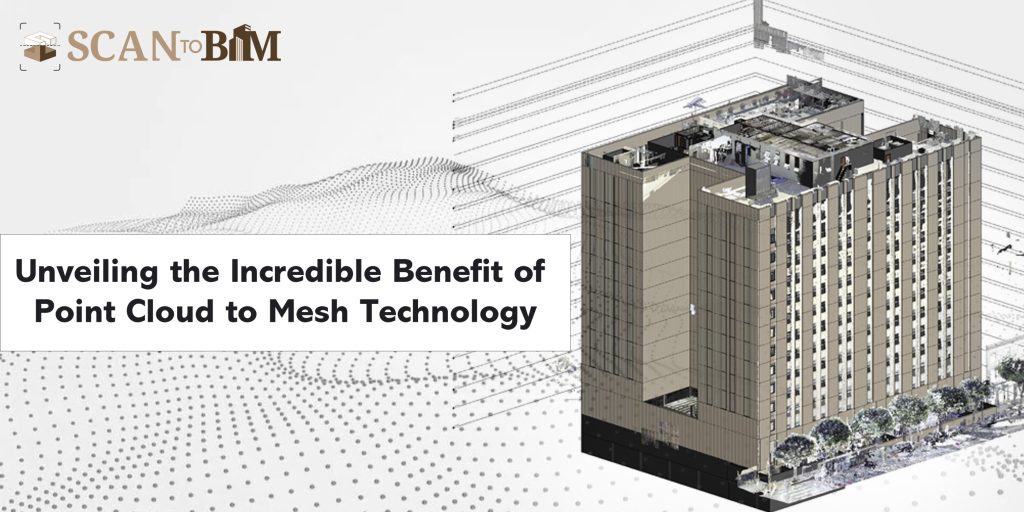
Introduction
The manner in which we create, organize, and carry out tasks keeps undergoing radical change in the fields of building and architecture. The implementation of point clouds for scanning for integrating offerings, additionally referred to as Scan to BIM Services, represents a single such revolutionary development. Construction industry professionals can create highly precise and precise 3D meshes from unstructured point-cloud information using such cutting-edge methods. We’ll look at the various benefits that switching from cloud meshing provides to the building sector as well as how it improves the scanning process to BIM workflow throughout this article on the blog.
1. Enhance interaction and Visualisation
Being able to convert complicated point cloud information towards intelligible and aesthetically pleasing 3D models constitutes one of the main benefits of using a point cloud meshing service. Stakeholders may visualize the endeavor in an additional natural and accurate way by turning the initial information into a networked depiction. By promoting positive interaction amongst team members, clients, and shareholders, such improved visualization makes sure that everybody is aware of the design’s purpose.
2. Consistent and Precise Measurements
Measuring with precision and accuracy is made possible by point cloud-to-mesh conversion. Through the 3D mesh models, building professionals may extract essential dimensions and numbers, ensuring precise estimates, materials sourcing, and expense calculations. Stakeholders may identify conflicts, inconsistencies, or shortcomings in design promptly thanks to the mesh model’s measurement and evaluation capabilities, preventing costly revisions and cutting down on project holdups
3. Simplified Clash Coordination and Detection
The scanning to BIM method greatly enhances clash identification and coordination thanks to Point Cloud to Mesh Services. The BIM (architectural Information Modelling) model might be layered with the 3D mesh model to more effectively identify as well as address any conflicts among various architectural components. This improved clash detection procedure makes it easier to prevent disputes on the job site, lowering the chance of rework and assuring a more efficient building procedure.
- Improved Decision-Making
Building professionals may make educated choices during the project’s lifespan thanks to the precise and thorough 3D mesh models produced by point cloud to mesh services. These 3D models offer an in-depth analysis of the project, enabling participants to examine design options, consider the order of development, and identify probable construction difficulties. Team members may make data-driven choices that reduce risks, increase effectiveness, and maximize the project’s results by receiving access to such beneficial data.
- Efficient As-Built Documentation
As-built documentation is essential for renovation as well as retrofitting projects. By precisely replicating real-world circumstances, point cloud-to-mesh services enables the construction of excellent quality as-built simulations. Authentic as-built documentation may be produced by transforming point cloud data into 3D meshes, enabling team members to collaborate with current and trustworthy information. For upcoming maintenance, property management, or growth strategies, this paperwork is an invaluable resource.
- Enhanced Collaboration and Project Coordination
The many parties participating in a building project benefit from enhanced communication and project coordination thanks to point cloud to mesh services. Architects, engineers, vendors, and subcontractors may work together more effectively by using the 3D mesh models for debating decisions regarding design, assessing building ability problems, and coordinating their tasks. This cooperative method encourages teamwork, which lowers disagreements, boosts productivity, and improves overall project results.
- Increased Safety and Risk Mitigation
Safety on building sites is improved by the scanning to BIM process, which is made possible by point cloud to mesh services. Relevant safety risks might be recognized and foreseen through the combination of the 3D mesh models with the management of projects and simulator software. Such a pre-emptive strategy for safety planning lowers delays resulting from harm, prevents accidents from happening, and creates a more secure work environment for all building workers.
- Efficient Retrofitting and Renovation
An in-depth comprehension of the as-built circumstances is necessary for retrofitting and restoring old structures. Construction specialists may accurately portray the current site and building using point cloud to mesh technological advances, which speeds up retrofitting and remodeling procedures. Designers may identify possible conflicts, make plan revisions, plus guarantee the precise incorporation of novel components by superimposing the mesh onto the as-built model. This characteristic minimizes construction-related disturbances while also saving resources as well as time.
- Seamless Integration with BIM Workflows
Building information modeling (BIM), which enables stakeholders to work together to organize project data effectively, has grown into an established practice throughout the construction industry. Point cloud to mesh technique combines smoothly with BIM procedures, improving the model’s precision and comprehensiveness. Construction experts can confirm design intent, find conflicts, and assure precise as-built documents by superimposing the mesh over the BIM model.
Conclusion
There is no denying the advantages of point cloud to mesh services in the building industry. The manner in which building endeavors are conceptualized, planned, and carried out has been revolutionized by the capacity to turn raw point cloud data into precise and in-depth 3D mesh models. The scanning to BIM procedure gains a number of benefits through point cloud to mesh services, including increased visualization and accurate measurements, as well as faster collision detection and more efficient decision-making. Building professionals may optimize project results, enhance cooperation, and stimulate development in the sector by adopting this modern technology.